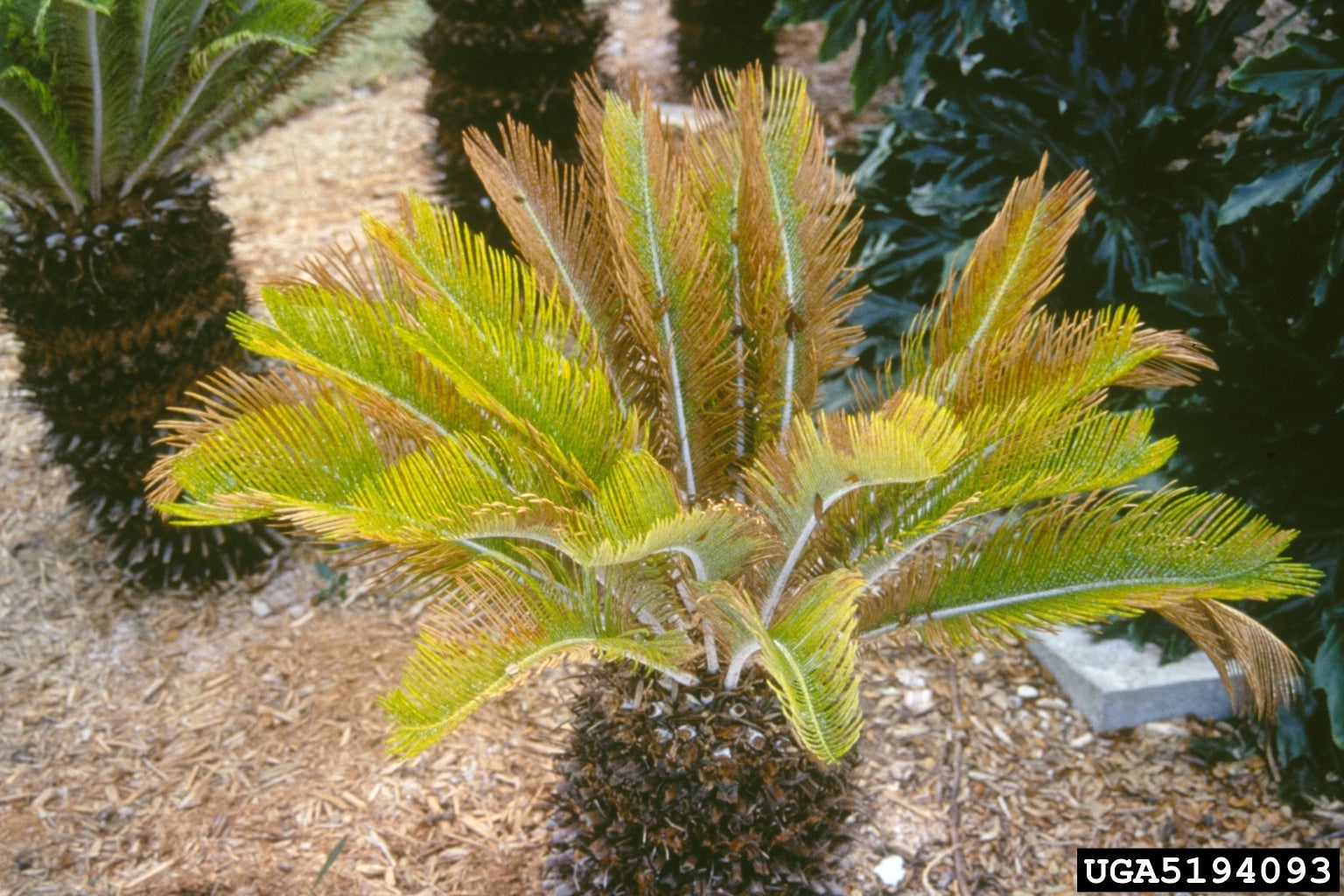Sago Palm Problems: Tips On Treating Sago Palm Diseases


Are you wondering how to treat sago palm problems showing up on your tree? Sago palms aren't actually palm trees, but cycads – ancient cousins of pines and other conifers. These slow-growing tropical trees are relatively disease-resistant, but they are susceptible to certain sago palm tree diseases. If your tree isn't looking its best, read on to learn the basics of identifying and treating sago palm diseases.
Getting Rid of Sago Palm Diseases
Here are some common diseases of sago palm and tips on treating them: Cycad scale – This sago palm problem isn't a disease, but the powdery white substance on the leaves may lead you to believe your palm has a fungal disease. Scale is actually a tiny white pest that can destroy a sago palm very quickly. If you determine your tree is affected by scale, prune heavily infested fronds and dispose of them carefully. Some experts advise spraying the tree with horticultural oil or a combination of malathion and horticultural oil once a week until the pests are gone. Others prefer to use a systemic insect control. Contact your local Cooperative Extension office to determine the best remedy for your tree. Fungal leaf spot – If you notice brown lesions, or if leaf edges turn yellow, tan or reddish brown, your tree may be affected by a fungal disease known as anthracnose. The first step is to remove and destroy affected growth. Be sure to keep the area under the tree clean and free of plant debris. Your Cooperative Extension agent can tell you if you need to treat your sago palm with a fungicide. Bud rot – This soil-borne fungus usually strikes in warm, damp weather. It is most evident on new leaves, which may turn yellow or brown before they unfurl. Fungicides may be effective if you catch the disease in its early stages. Sooty mold – This fungal disease is easy to spot by the powdery, black substance on the leaves. The fungus is often attracted by sweet, sticky honeydew left behind by sap-sucking insects – usually aphids. Treat the aphids with regular application of an insecticidal soap spray. Once the aphids are eradicated, the sooty mold will probably disappear. Manganese deficiency – If new fronds are yellow or display yellow splotches, the tree may be lacking manganese. This often occurs when the tree is planted in manganese-poor soil, which is common in tropical climates. This deficiency is easily treated by applying manganese sulfate (not magnesium sulfate, which is completely different).
Gardening tips, videos, info and more delivered right to your inbox!
Sign up for the Gardening Know How newsletter today and receive a free copy of our e-book "How to Grow Delicious Tomatoes".

A Credentialed Garden Writer, Mary H. Dyer was with Gardening Know How in the very beginning, publishing articles as early as 2007.
-
 Looking For Plants To Give You The Soft And Fuzzies? Try These 5 Fuzzy Leaf Plant Options
Looking For Plants To Give You The Soft And Fuzzies? Try These 5 Fuzzy Leaf Plant OptionsLovers of texture, drama, silver foliage and tactile plants will adore these special sensory garden additions. These fuzzy leaf plant options will leave you all aglow
By Susan Albert
-
 Get Ready For A Summer Of Hummers! Grow These Full Sun Hummingbird Plants and Flowers
Get Ready For A Summer Of Hummers! Grow These Full Sun Hummingbird Plants and FlowersIf you’re lucky enough to enjoy a sunny backyard, make sure you are maxing out on your pollinator opportunities and grow these full sun hummingbird plants and flowers
By Tonya Barnett